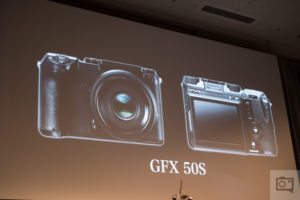
When it comes to the truly passionate photographers, there’s a time-honoured tradition to tweak your gear as necessary for purpose. Maybe you mod that grip, install some custom firmware or perhaps jerry rig a previously incompatible lens to fit your body.
Italian company PrimaLuceLab however, have gone to the darkest frontiers of adaptation by turning a standard Nikon D5500 DSLR into an astounding astrophotography abomination.
The ‘D5500a Cooled’ as they’re calling it, has been retooled into the ultimate gadget for night sky shooting from the ground up – so much so that it’s hard to see where the original begins and the mods end.
/PrimaLuceLab
For starters, the original CMOS sensor has been popped out and replaced with a CCD sensor. Though with modern advances in sensor tech the difference has been lessened, CCD sensors still have a quality advantage, particularly with astrophotography shooting. The one downside to CCDs – and part of why you see them less in the wild – is the sheer heat they create over long exposures. That heat can amount to some serious noise for astrophotography images.
Anticipating this like the mad scientists they are, the PrimaLuceLab team has added a massive cooling system to the backside of the camera. It keeps the sensor temperature down to a frosty -27°C in relation to the ambient heat around it, maintaining it at an optimum working temperature. This clears up the noise and boosts the potential depth massively.
Dark frame comparison recorded (@6400ISO) with cooling system powered ON (left, sensor temperature -2°C) and OFF (right, sensor temperature 20°C). /PrimaLuceLab
Of course all that cold air can be a problem in of itself. Rapid changes in temperature quickly create moisture issues, and can cause condensation droplets to form on lenses. That’s why the camera has been fitted with an anti-dewing system that counters this problem whenever the cooler kicks in.
The final upgrade in this particular Frankensteinian chain of design choices for the D5500 is an upgraded power system. All of that cooling tech requires a lot of juice and those long exposures take a while. The camera can now be powered without the original Nikon battery, seemingly by connecting it up to an external source via cable to the cooling system itself.
/PrimaLuceLab
There have also been some other modifications to the actual mechanisms of the camera. An integrated shutter control has been implemented to allow a sequence of long expositions to be enacted without an external controller. The filter in front of the sensor of the D5500 has also been replaced with one that has a greater sensitivity to the red part of the spectrum.
“The power of a cooled CCD camera combined with the ease of use of a DSLR one, all in a single product that allows you to record stunning images of deep sky (but also of the planets and the Moon!),” claims PrimaLuceLab’s sales pitch.
California nebula (NGC1499) recorded by Filippo Bradaschia with D5500a Cooled and AIRY ED100 apochromatic refractor. /PrimaLuceLab
We cannot deny that this behemoth will be able to get some fantastic shots of space, nor do we doubt the dedication to astronomy that the team at PrimaLuceLab possesses. However, it might make more sense to buy an existing astrophotography camera that was built for purpose. All these expensive upgrades mean that buying the D5500a Cooled will set you back ˆ2,190 (US$2,400) as opposed to the regular D5500 which is available from many retailers for US$800 and under. Even professional astrophotography cameras from specialist brands like Atik come under that price.
We’re not sure if that’s the point though. This camera is frankly, a work of art; the functionality of a super space cam with the beautiful body of a Nikon classic. You’re not just paying to use it (even though we’d really hope you would) you’re paying also to show people you own it.
. digitalrev.com2016-10-13 03:00



